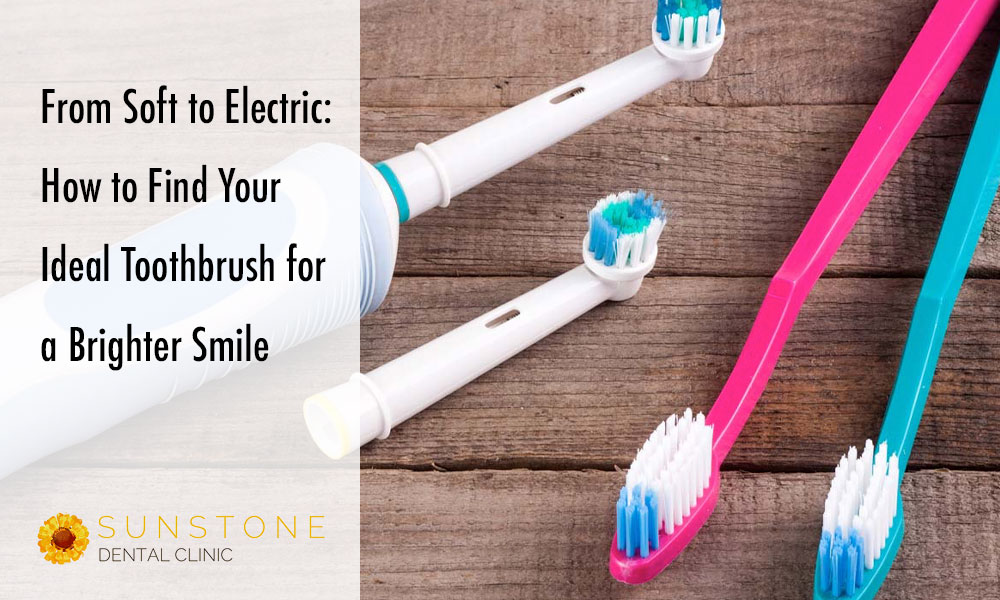On the hunt for the best toothbrush to enhance your smile? You’ve landed in the right spot! This article will assist you in selecting the perfect toothbrush, whether you lean towards soft bristles or an electric model. Choosing the right toothbrush is pivotal for maintaining oral health, and it’s important to pick one that suits your particular needs, whether you’re prioritizing gentle care for sensitive gums or seeking advanced cleaning features.
The Importance of Choosing the Right Toothbrush
Maintaining excellent oral hygiene hinges on selecting the appropriate toothbrush. Your toothbrush is a fundamental instrument for eliminating plaque and food particles; their neglect can result in tooth decay, gum issues, and unpleasant breath. Thus, it is vital to opt for a toothbrush that efficiently cleans your teeth and gums while ensuring no harm or discomfort is caused.
Manual vs. Electric Toothbrushes: Pros and Cons
Manual Toothbrushes:
Pros:
- Accessibility: Manual toothbrushes are readily available, inexpensive, and don’t require charging or batteries.
- Simplicity: They are easy to use, making them suitable for all age groups.
- Portability: Manual toothbrushes are travel-friendly and do not rely on electricity.
Cons:
- Manual Effort: Cleaning effectiveness depends on your brushing technique, which may not be consistent.
- Inadequate Timing: Manual toothbrushes lack built-in timers, making it easier to underbrush.
- Limited Features: They typically lack advanced features like pressure sensors and brushing modes.
Electric Toothbrushes:
Pros:
- Efficiency: Electric toothbrushes often provide better cleaning and plaque removal due to consistent brush head movement.
- Built-in Timers: They have timers to ensure you brush for the recommended two minutes.
- Pressure Sensors: Many electric toothbrushes alert you if you’re brushing too hard, preventing damage to gums and enamel.
- Various Brushing Modes: Some models offer multiple modes for different cleaning needs, such as sensitive or whitening.
Cons:
- Cost: Electric toothbrushes tend to be more expensive upfront, and there are ongoing costs for replacement brush heads and charging.
- Maintenance: They require regular charging and the replacement of brush heads, which can be a hassle.
- Travel Challenges: Their bulkiness and need for charging can make them less travel-friendly.
The decision between a manual and electric toothbrush relies on personal preferences, budget, and oral health needs. Both can work well if used correctly, but electric toothbrushes typically come with extra features for better oral care.
Factors to Consider When Choosing a Toothbrush
Choosing the right toothbrush involves looking at various factors:
- Bristle Type: Dentists usually advise using soft bristle toothbrushes for gentle cleaning. Avoid medium or hard bristles as they can be tough on your teeth and gums unless advised by your dentist. Extra-soft bristles are an excellent choice if you have sensitive teeth and gums.
- Toothbrush Head Size: The head should be small enough to reach all areas, including back molars. A larger head may be hard to use effectively. Some brushes have specialized shapes for hard-to-reach areas.
- Handle Design: A comfortable grip is essential for an enjoyable brushing experience. The handle should be long enough for a firm grip without sacrificing maneuverability.
- Manual or Electric: Choose between a manual or electric toothbrush based on your oral health needs, budget, and personal preference. Electric toothbrushes may be better for specific dental concerns.
By taking these factors into account, you can find a toothbrush that suits your needs. Keep in mind that what works for one person may not be the best choice for another, so don’t hesitate to explore different options to find the right toothbrush for you.
Tips for Maintaining and Cleaning Your Toothbrush
Taking care of your toothbrush is vital for its longevity and effectiveness. Here are some simple tips:
- Rinse After Use: After brushing, rinse your toothbrush with tap water to remove toothpaste and debris, preventing bacterial buildup.
- Store Properly: Keep your toothbrush upright to air dry between uses. Avoid closed containers or covering bristles to prevent bacterial growth.
- Separate Brushes: Don’t store multiple toothbrushes together to prevent cross-contamination. Keep them separate for hygiene.
- Replace When Needed: Toothbrushes wear out and should be replaced every three to four months or sooner if bristles are frayed. Worn brushes can be less efficient and may harm your teeth and gums.
- Avoid Sharing: Never share toothbrushes, as it can transfer bacteria and viruses. Each person should have their toothbrush for good oral hygiene.
By following these tips, you’ll keep your toothbrush clean and effective, ensuring optimal oral health.
How Often Should You Replace Your Toothbrush?
Regularly changing your toothbrush is essential for good oral hygiene. As a general rule, replace it every three to four months, but there are cases when you should do it more frequently: when the bristles are frayed or bent, after an illness or oral infection, following dental procedures like surgery or root canals, or when in doubt about its condition. Consistent replacement ensures effective and hygienic oral care for a healthy, radiant smile.
Conclusion
Selecting the appropriate toothbrush is vital for good oral hygiene and a more radiant smile. Important factors to weigh include bristle type, toothbrush head size, handle design, and your specific oral health requirements. To maintain the effectiveness of your toothbrush, it’s crucial to rinse it after every use, store it appropriately, and replace it at regular intervals. Furthermore, for consistent oral health care, be sure to schedule routine dentist appointments with Sunstone Dental Clinic at (604) 428-8722.

